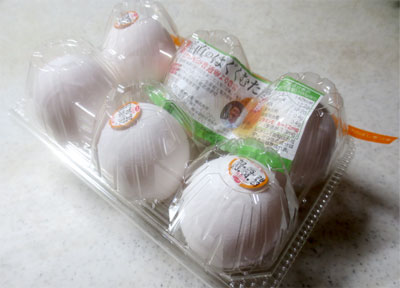
“Price Honor Student”, Listing Story of Hen Egg Futures (the second half volume)
May 22, 2023
A tailwind of large scale amendment on the Act in 1990
In November 1999, hen egg futures transaction was realized at Central Japan Commodity Exchange.
Toyohashi Dry Cocoon Exchange whose dry cocoon market had declined clarified its policy toward listing promotion at “The hen egg futures trading system investigative meeting”set up in 1982.
However, the exchange had thought that even if it acts for its listing only in Chubu district where the exchange had been located, its realization would be low, so after that, to promote activities toward its listing, the exchange visited the president of Nihon Rangyo Kyokai Association (NRKA) and requested for cooperation of the association on April 30, 1982. Receiving it, NRKA set up “The investigative committee on hen egg exchange”, and after two years consideration, the committee completed its report. Based on the report, Toyohashi Dry Cocoon Exchange held the meeting with the meat and egg division, the Ministry of Agriculture, Forestry and fisheries (MAFF). In 1985, NRKA hosted“The lecture on improvement of hen egg distribution and commodity exchange”and about sixty persons from egg traders attended the lecture. Such activities toward listing continued but didn’t reach listing after all.
At the beginning of 1990s, as a substitute for Toyohashi Dry Cocoon Exchange, Nagoya Grain Sugar Exchange declared to promote realization of its listing. In December 1990, the exchange consulted to conduct “Development of research on hen egg price index transaction, etc.”to its special committee.
Also, in the same year, with large scale amendment of the Commodity Exchange Act, the systems of index futures transaction and cash-settled futures transaction were introduced in the Act. In those days when Toyohashi Dry Cocoon Exchange had considered the listing, its target product was a physical hen egg in shell, while Nagoya Grain Sugar Exchange considered listing of cash-settled futures transaction. The reason that “Index”was included in its research target seems to not having advanced correct recognition of index futures and cash-settled futures.
After that, management of Nagoya Grain Sugar Exchange became distressed, the exchange and Nagoya Textile Exchange dissolved in the form of being absorbed by Toyohashi Dry Cocoon Exchange in April 1995.
In October 1996, Toyohashi Dry Cocoon Exchange changed its name to Central Japan Commodity Exchange and continued its activity toward listing of hen egg transaction. After that, the exchange set up“The committee on market design of hen egg futures transaction”, and In April 1998, it completed its report.
In November 1999, listing of hen egg futures transaction was realized at Central Japan Commodity Exchange. Its member traders, whose number was 46 (among them, the member traders that can receive trading from individual customers were 26), started the trading under the hen egg futures market. The trading volume on the first day was 22,165 because fee discount system was introduced. The president at the time, Hanshichi Toyoshima stated “With the amendment of the Commodity Exchange Act in 1990, since cash-settled futures transaction could be listed, it opened a new path”, pointing out that the amendment was a key.
Central Japan Commodity Exchange merged Osaka Commodity Exchange in January 2007, however, the commodity futures markets in Japan already had been declining, and as a result, the exchange dissolved at the end of January 2011.
As to the hen egg futures transaction, trading at new contract months wasn’t done since May 2010. Total trading volume for about ten years was 3,204,283 (monthly average: 25,841), the third largest volume product at the exchange, following gasoline (total volume: 96,884,577) and kerosene (83,771,948).
(The End)
(Futures Tribune・issued May 16, 2023・no.3215)
Link(Japanese site)
©2022 Keizai Express Corp.